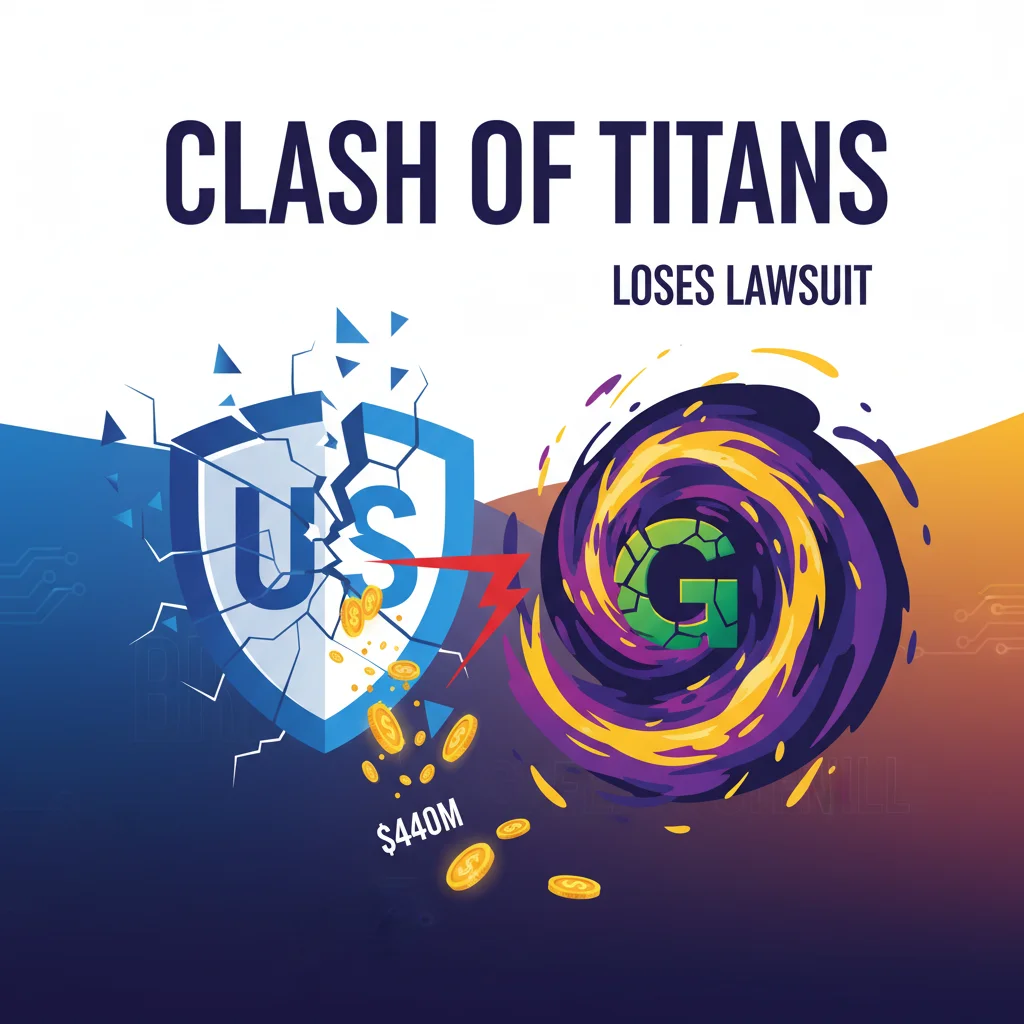
Clash of Titans: UBS Loses $440M Greensill Lawsuit Against SoftBank in High-Stakes Showdown
In a legal battle that pitted two of the world’s financial behemoths against each other, the UK High Court has delivered a decisive verdict. UBS, representing a Credit Suisse fund still reeling from the aftershocks of the Greensill Capital collapse, has lost its $440 million lawsuit against Japanese investment giant SoftBank. The ruling closes a significant chapter in the sprawling, multi-billion dollar saga of Greensill’s implosion, a story of ambition, high-risk finance, and catastrophic failure that continues to cast a long shadow over the global economy.
The case, heard in London, centered on allegations of preferential treatment and breached duties in the frantic final days before Greensill, a once-lauded fintech star, filed for insolvency in March 2021. While the court’s decision clears SoftBank in this specific matter, it forces a renewed examination of the complex web of relationships, risks, and responsibilities that led to one of the most significant corporate collapses in recent memory. This isn’t just a story about one failed lawsuit; it’s a cautionary tale for the entire world of finance, investing, and financial technology.
The Ghost at the Feast: Understanding the Greensill Collapse
To grasp the significance of this lawsuit, one must first understand the spectacular rise and fall of Greensill Capital. Founded by Australian financier Lex Greensill, the company was a pioneer in a niche but crucial area of finance known as “supply chain finance,” or reverse factoring. In simple terms, Greensill would pay a company’s suppliers early, taking a small fee for the service. The company would then pay Greensill back at a later date. This model promised to inject liquidity into the economy and help small businesses manage their cash flow.
For a time, it seemed like a revolution in financial technology. Greensill attracted powerful backers, including former UK Prime Minister David Cameron as an adviser and, most notably, a $1.5 billion investment from SoftBank’s Vision Fund. This backing gave Greensill an aura of invincibility and a valuation that soared into the billions. However, beneath the surface, the risks were multiplying. The company’s business became heavily concentrated on a few clients, most famously the GFG Alliance group of companies owned by steel magnate Sanjeev Gupta. Furthermore, the loans it was packaging were becoming increasingly risky and complex, straying far from the simple, low-risk model it initially advertised.
The house of cards collapsed in March 2021 when its primary insurer refused to renew its coverage, exposing the true risk of the assets. A crisis of confidence ensued, leading to a liquidity crunch and a swift insolvency filing, leaving investors, including Credit Suisse’s clients, with billions in potential losses.
The Core of the Conflict: A $440 Million Claim of Preferential Treatment
This lawsuit stemmed from the tangled relationships between Greensill, its key investor SoftBank, and Credit Suisse, which had been a major conduit for Greensill’s financial products. The Swiss bank had created a suite of supply chain finance funds, worth around $10 billion, which it sold to its wealthiest clients, marketing them as safe, stable investments. These funds were filled almost exclusively with assets originated by Greensill.
The specific claim brought by the Credit Suisse fund (now under UBS’s management following its emergency takeover) focused on a $440 million loan Greensill made to Katerra, a US construction fintech. The critical detail? Katerra was also a portfolio company of SoftBank’s Vision Fund. The fund’s lawyers argued that in late 2020, as Greensill’s financial situation became precarious, SoftBank used its influence to orchestrate a “restructuring” that resulted in this $440 million loan being repaid just months before Greensill’s collapse.
The legal argument was that this transaction effectively allowed SoftBank to pull its money out of a failing investment, while other investors, like those in the Credit Suisse fund, were left holding worthless assets. The claim accused SoftBank of “knowing assistance in a breach of fiduciary duty” by Greensill’s directors, alleging they prioritized the interests of a powerful shareholder over their duties to the company and its creditors. It was a serious allegation, suggesting a powerful investor had secured a private escape hatch from a sinking ship.
Key Players in the Greensill Saga
To clarify the intricate relationships at the heart of this legal drama, the table below outlines the main entities and their roles.
| Entity | Role & Involvement |
|---|---|
| UBS Group AG (for Credit Suisse) | The plaintiff. Inherited the lawsuit after acquiring its rival, Credit Suisse. Its funds lost billions by investing in assets created by Greensill. |
| SoftBank Group | The defendant. Its Vision Fund was a major equity investor in Greensill and also in Katerra, the company at the center of the $440M loan. |
| Greensill Capital | The collapsed fintech firm. Its business model of supply chain finance is at the center of the entire saga. Its directors were accused of breaching their fiduciary duties. |
| Katerra | A now-defunct US construction technology company, also backed by SoftBank. It received the $440M loan from Greensill that was later repaid, sparking the lawsuit. |
The Verdict: Why the Court Sided with SoftBank
In the end, the London High Court dismissed the claim before it could proceed to a full trial. Judge Robert Bright concluded that the case, as presented by the Credit Suisse fund, had “no real prospect of success.” This type of summary judgment is a high bar to clear and indicates the court saw fundamental flaws in the plaintiff’s legal arguments or the evidence presented to support them.
To prove “knowing assistance in a breach of fiduciary duty,” the fund’s lawyers needed to establish not only that Greensill’s directors had breached their duties to the company but also that SoftBank had actual knowledge of this breach and had dishonestly assisted in it. This is a notoriously difficult claim to prove in corporate law.
While the full written judgment will provide more detail, the outcome suggests that UBS was unable to produce sufficient evidence to convince the judge that SoftBank’s actions crossed the line from aggressive-but-legal business practice into unlawful assistance. SoftBank successfully argued its actions were legitimate steps taken to protect its investment interests within the bounds of the law. For the Japanese conglomerate, the ruling is a significant victory, helping it distance itself further from the toxic legacy of the Greensill collapse. For UBS, it’s another costly write-off in its monumental effort to clean up the mountain of legal and financial problems it inherited from Credit Suisse.
The Wider Fallout: A Long Shadow on Banking and Fintech
This verdict is more than just a financial footnote; it’s a critical data point in the ongoing reassessment of risk in the financial services industry. The Greensill scandal was a wake-up call, exposing vulnerabilities in several key areas:
- The Fintech Hype Cycle: Greensill’s story is a classic example of how a compelling narrative and powerful backers can obscure fundamental business flaws. It has forced investors and the stock market to apply greater scrutiny to fintech valuations and business models, particularly those in complex areas like lending and financial technology.
- Due Diligence and Risk Management: The failure of a major institution like Credit Suisse to properly assess the concentration risk within its supply chain finance funds was a catastrophic error. The scandal has led to a global tightening of risk management protocols and a renewed focus on the age-old investing principle: don’t put all your eggs in one basket.
- Regulatory Scrutiny: Regulators worldwide have taken a much closer look at the “shadow banking” sector, which includes supply chain finance. The Greensill collapse demonstrated how activities outside the traditional, highly regulated banking perimeter can pose systemic risks to the broader economy.
For UBS, this loss underscores the Herculean task it faces. The 2023 takeover of Credit Suisse was a rescue mission, but it came with a portfolio of immense legal liabilities. While a $440 million loss is manageable for a bank of its size, it is part of a pattern of costly clean-ups that will likely continue for years. Each legal battle, win or lose, consumes resources and serves as a public reminder of the institutional failures that led to its rival’s demise.
Conclusion: A Costly Lesson in Modern Finance
The High Court’s dismissal of UBS’s $440 million claim against SoftBank brings a degree of legal clarity to one corner of the vast Greensill mess. It affirms that in this instance, SoftBank’s actions did not meet the high legal standard for liability. However, the saga’s true legacy lies not in the courtroom but in the lessons it offers to the entire financial ecosystem. It is a stark narrative about the dangers of unchecked ambition, the illusion of low-risk, high-return investments, and the critical importance of robust governance and transparent economics.
As the worlds of banking, trading, and technology continue to converge, the Greensill story will serve as a foundational text on how quickly innovation can curdle into crisis without the guardrails of prudence and ethical oversight. For investors, regulators, and business leaders, the ghosts of Greensill will continue to haunt boardrooms and trading floors for a long time to come, a permanent reminder of the high price of getting it wrong.


